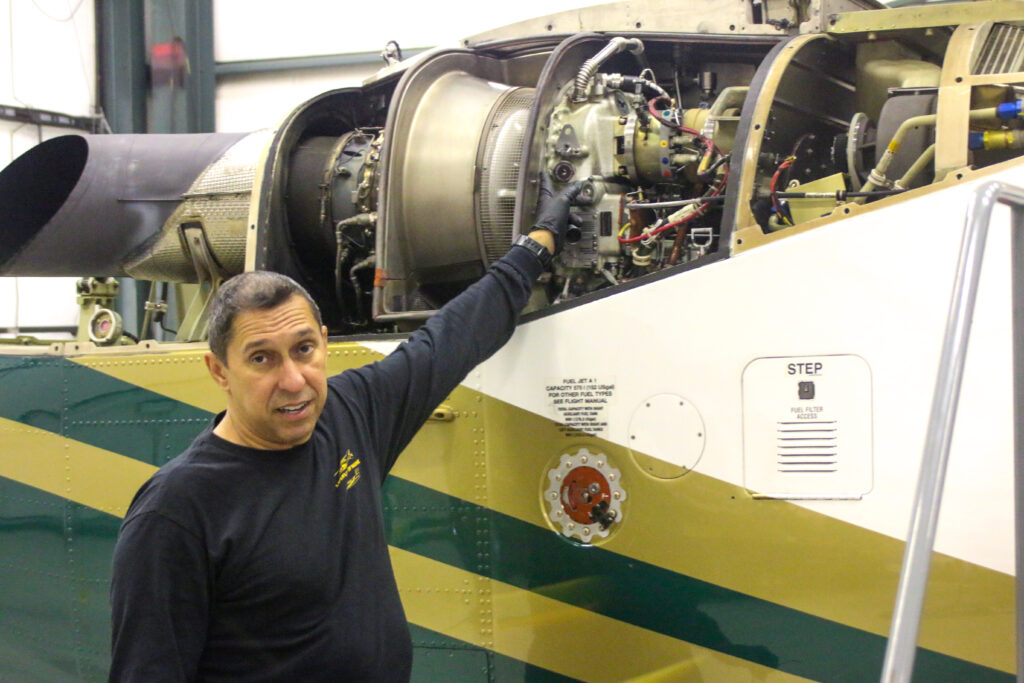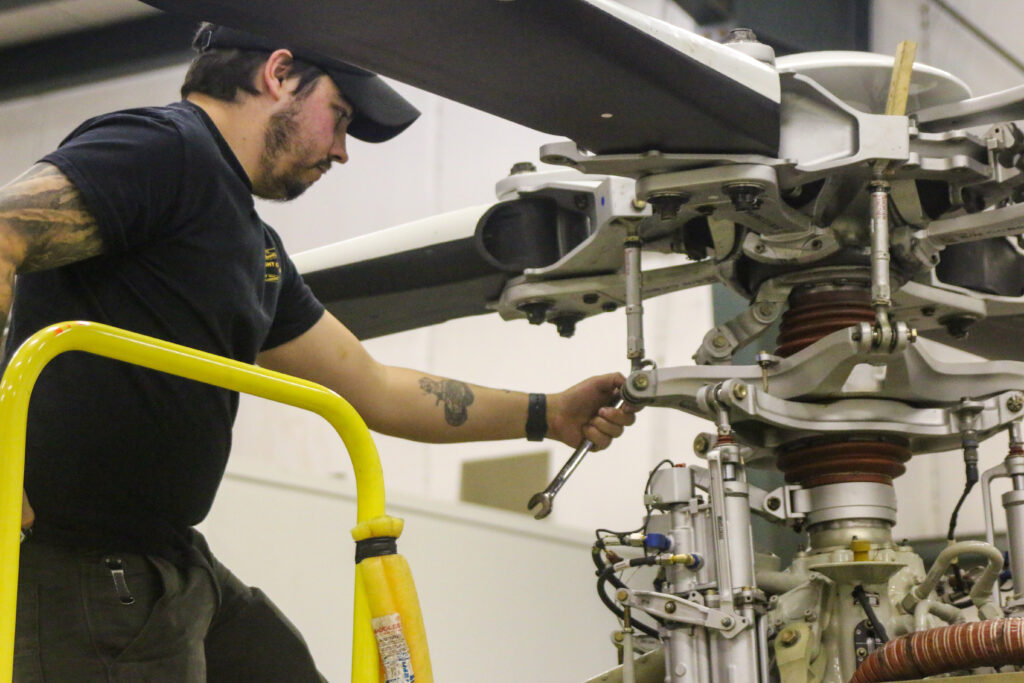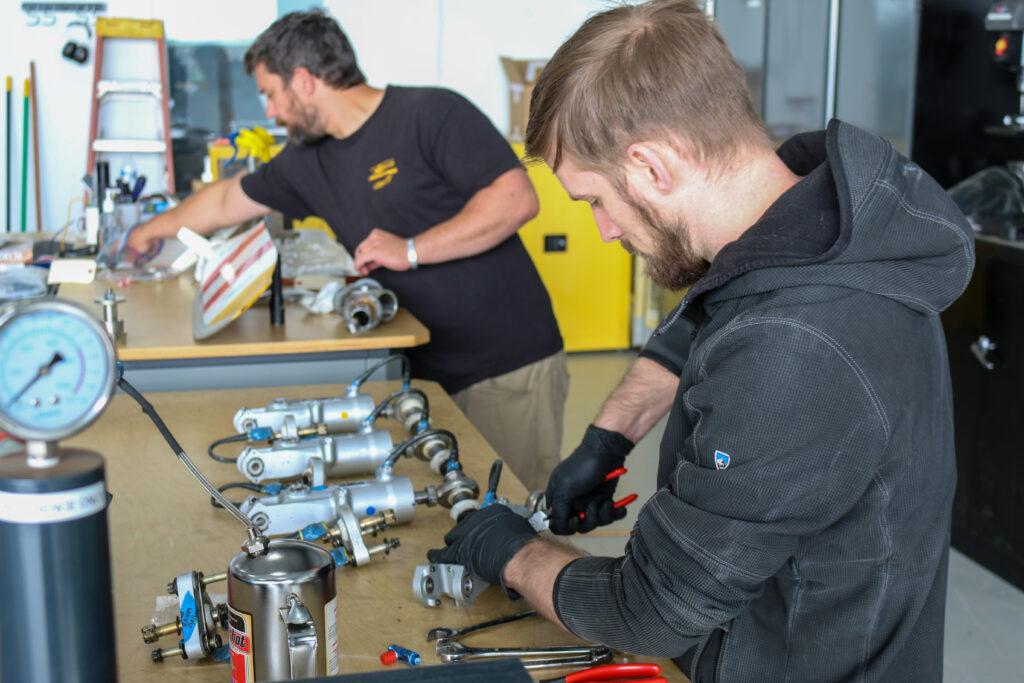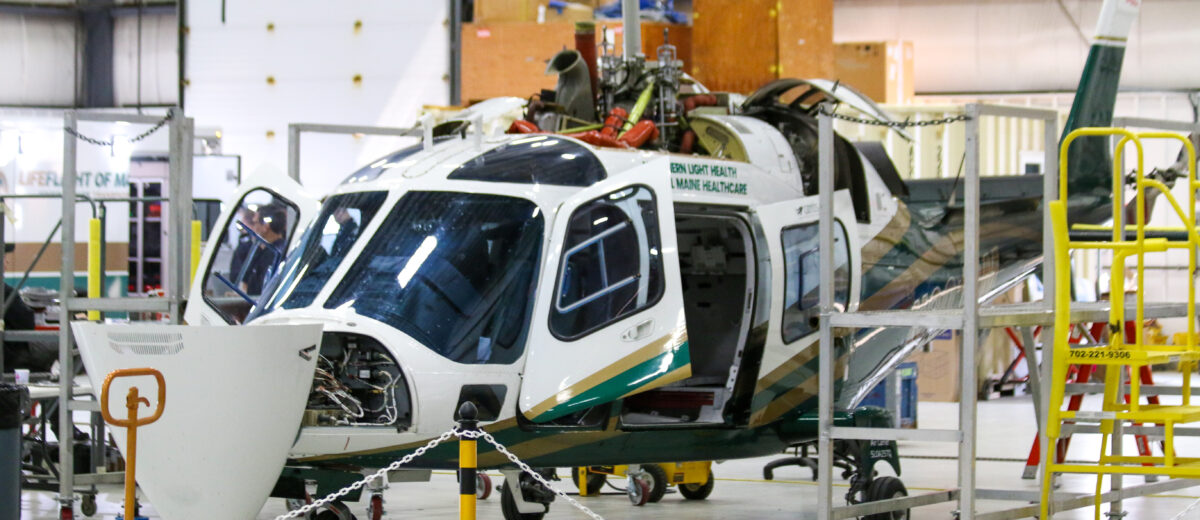The Work on the Ground that Keeps Us in the Air
This story appeared in the Spring 2024 issue of Dispatches.
“Helicopters defy the laws of physics.” Carlos Marrero was attempting to explain in layman’s terms what it takes to keep a LifeFlight of Maine helicopter safely in the air. “There are so many moving parts and vibrations in a helicopter. They need to be maintained often.”
Carlos has served as an Aviation Maintenance Technician (AMT) with LifeFlight for nine years. In his decades-long career, he has worked for aviation operations of all kinds. “I’ve been in a lot of places around the country with different companies, and LifeFlight is one of the busiest programs I’ve ever seen. We are always flying. We go everywhere.”
LifeFlight transported 1,571 patients by helicopter in 2023. “Maine is a big state,” said Alex Fulton, who joined LifeFlight as an AMT in 2022. “You can have a helicopter that’s going all the way up north to Fort Kent and then down to Boston in the same trip.” Those hours in the air add up quickly with three helicopters typically in service every day and night of the year.

A helicopter counts flight hours — the amount of time the aircraft is actually off the ground — similarly to how a car’s odometer measures the miles it has been driven. Like a car, helicopters have regular maintenance windows recommended by the manufacturer.
For example, every 5,000 miles or so a car needs an oil change. Every 50,000 miles, let’s say, it needs a new set of tires. At 100,000 miles, the manufacturer might recommend replacing a belt or pump of some sort, not because it’s broken, but to ensure it doesn’t break while speeding down the highway. (LifeFlight’s AMTs cringe slightly at the oversimplification of comparing automobile and helicopter maintenance — one important difference, Alex noted, is that “there’s no pulling over at 1,800 feet in the sky” — but the analogy is illustrative for those of us without years of experience taking apart either machine).
For LifeFlight’s A109 helicopters, which are built by Leonardo (an Italian-based aviation company) these maintenance windows occur in multiples of 25 hours — 25-hour inspection, 50-hour inspection, 100-hour inspection, 200-hour inspection, etc. The maintenance windows stack, meaning that a 200-hour inspection repeats all maintenance that was performed at 25, 50, and 100 hours, plus the additional maintenance recommended by the manufacturer at 200 hours.
“We have a checklist for each section, or each subsystem,” said Scott Clark, who has worked as an AMT for LifeFlight for the past nine years. “You go through and make sure you don’t miss anything, then you move on to the next subsystem, nose to tail.”
In 2023, LifeFlight logged more than 3,003 flight hours collectively among its aircraft. “Some companies don’t fly 100 hours on one aircraft in a year. 100 hours here, that could be almost every month,” Carlos explained.

“It means we’re doing these inspections more often,” said Alex. “We’re doing three or four 200-hour inspections in a year. By the time you get to your fourth 200-hour inspection,” he continued, “you’re doing an 800-hour inspection. That’s everything: the engines get looked at, the landing gear gets serviced, the rotor head comes off — all that kind of stuff.” These inspections can take LifeFlight’s team of AMTs days to complete.
The aircraft are in the hangar a lot because they’re in the air a lot. “It’s not because things are broken, it’s because we need to make sure they can keep flying,” Alex explained. But even with the most rigorous maintenance, things still sometimes break. LifeFlight’s aircraft are visually inspected daily by an AMT, and the pilot performs a similar visual inspection before each takeoff. The skill and experience of LifeFlight’s AMTs is important here, too. “For our patients, the faster we get the aircraft back in service, the better,” said Alex, who spent six years working on Blackhawks in the US Army and three years at Leonardo’s repair facility in Philadelphia before coming to LifeFlight.

LifeFlight of Maine has spent two and half decades building a culture focused on safety, the system, and the team. Each member of the crew — pilot, nurse, paramedic, AMT, or communications specialist — works to be the best at what they do, so that as a team they can safely and reliably deliver the best care possible for every patient, whenever and wherever needed.
The AMTs rarely leave the hangar during their shifts, and they almost never see LifeFlight’s patients, but they are a vital part of this team. Without them, the aircraft would never leave the ground. “We go somewhere, and people say, ‘Oh, you’re with LifeFlight. Are you a pilot? A nurse?’” Carlos said with a slight grin. “No, I’m a ‘copter doctor.”

